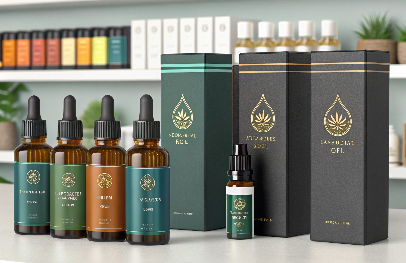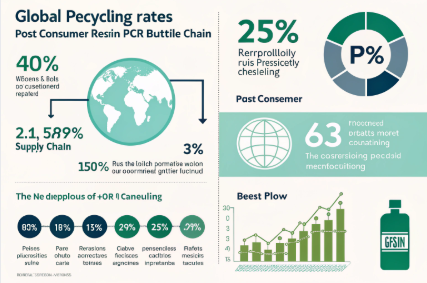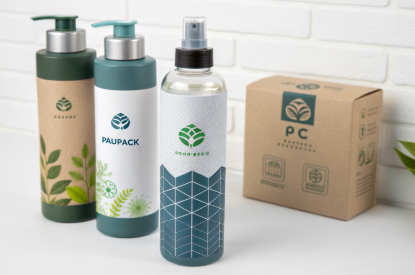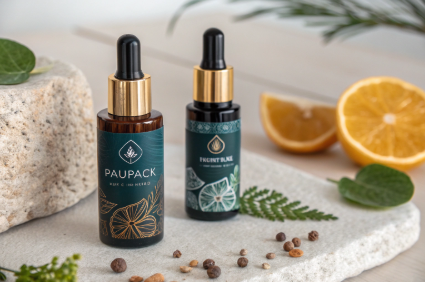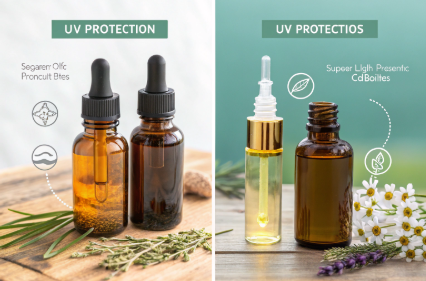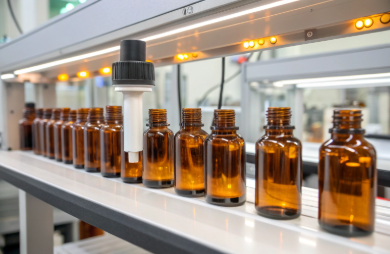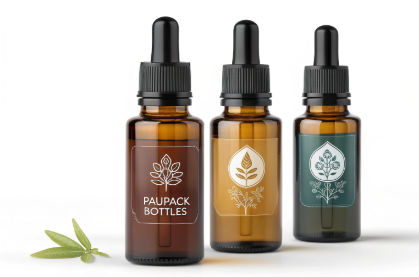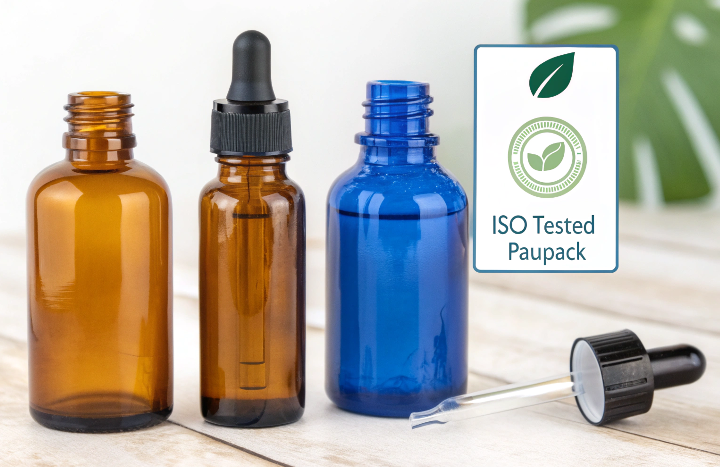Sustainability in packaging doesn’t start at the factory—or end with the customer. It hinges on what happens after use.
PCR (post-consumer recycled) bottles offer a greener alternative to virgin plastic, but their true impact depends on each country’s ability to collect, process, and reintegrate plastic waste into the supply chain.
Let’s explore how recycling rates differ worldwide—and what that means for responsible brands and suppliers.
Why PCR Recycling Rates Matter in Packaging Supply Chains Today?
You can’t close the loop if the system never collects the material.
High recycling rates are essential for ensuring a reliable supply of PCR material. They also influence pricing, availability, and brand claims around circular packaging.
Key Reasons Recycling Rates Matter
| Factor | Impact on Supply Chain |
|---|---|
| Material Availability | Higher rates = more raw PCR feedstock |
| Cost Stability | Larger local supply reduces import reliance |
| Sustainability Claims | Backed by real recycling performance data |
| Regulatory Compliance | Required in many markets (EU, CA, AU) |
| Consumer Perception | Informs brand reputation and trust |
At PauPack, we monitor PCR supply conditions across our production regions to ensure consistent material integrity, cost-efficiency, and compliance.
How Do Recycling Rates for PCR Bottles Vary Across Key Global Markets?
Recycling isn’t globally uniform—it’s local, policy-driven, and infrastructure-dependent.
Countries with extended producer responsibility (EPR) programs and strict waste separation mandates tend to have higher PET and HDPE recycling rates—the main feedstocks for PCR bottles.
2024 Estimated PCR Recycling Rates by Country
| Country | Estimated PET/HDPE Recycling Rate | Notes |
|---|---|---|
| Germany | 94% | Highest in EU due to DRS (deposit refund system) |
| Sweden | 88% | Strong plastic-to-plastic reuse policy |
| Canada | 77% | Provincial differences, strong commercial recycling |
| USA | 29% | Patchy infrastructure, low bottle recovery |
| Australia | 64% | National Packaging Targets support PCR use |
| China | 23% (formal sector) | Informal sector supplements, data varies |
| India | 14% | Low formal recovery, growing startup-led collection |
| Brazil | 17% | Urban-rural gaps, rising PCR demand from brands |
PauPack prioritizes sourcing PCR resins from regions with verified high collection and reprocessing capacity, reducing the risk of downcycled or contaminated batches.
Which Countries Lead in Closed-Loop PCR Recovery and Reprocessing?
True circularity goes beyond collection—it’s about bottle-to-bottle reuse.
Germany, Sweden, and Japan stand out for achieving high rates of closed-loop recycling, where used PCR bottles are turned back into food- or cosmetic-grade packaging.
Leaders in PCR Circularity
| Country | Closed-Loop Systems | Brand Opportunity |
|---|---|---|
| Germany | DSD (Dual System Deutschland), bottle-to-bottle PET | Ideal for DTC skincare and supplements |
| Switzerland | PET Recycling Switzerland network | High traceability, ideal for regulated products |
| Japan | Clean collection + bottle-grade reprocessing | High consumer acceptance of recycled packaging |
| Norway | DRS + high-tech sortation | >95% bottle recovery |
| Netherlands | Plastic Pact + mandatory recycled content | Strong demand for PCR-certified packaging |
At PauPack, we work with partners in Europe to secure certified food-grade PCR PET and HDPE resins for clean beauty, nutraceutical, and aromatherapy packaging.
What Challenges Still Limit PCR Recycling in Emerging Regions?
PCR is only as scalable as the infrastructure that feeds it.
In many developing countries, recycling faces systemic challenges—informal labor, lack of sorting technology, policy gaps, and economic disincentives for plastic recovery.
Common PCR Supply Challenges
| Challenge | Effect on Supply Chain |
|---|---|
| Lack of curbside collection | Reduces volume of recoverable bottles |
| Low virgin plastic price | Discourages investment in PCR |
| Poor sortation tech | Leads to contamination, downcycling |
| Weak producer responsibility laws | Brands lack incentives to invest |
| Unregulated imports | Floods market with non-recyclable formats |
PauPack works with Southeast Asian suppliers to support gradual improvements in waste sourcing, and we provide transparency on PCR resin origin and contamination levels.
How PauPack Supports Global Brands with PCR-Compliant, Eco-Certified Bottles?
We believe that sustainable packaging is more than a material choice—it’s a system.
PauPack offers fully documented, batch-traceable PCR bottle solutions for brands that need reliable, regulation-ready packaging with a clear environmental narrative.
Our PCR Bottle Advantage
-
PET and HDPE PCR bottles with ≥30% certified recycled content
-
Global Recycled Standard (GRS) and FDA food-contact compliant options
-
Stock and custom formats for 10ml–250ml
-
UV protection, drop-test durability, and color stability in PCR blends
-
Export-ready with MSDS, DoC, and carbon impact documentation
-
Guidance on country-specific recyclability labeling and DRS incentives
Whether you're selling essential oils in Sweden, vitamin sprays in Canada, or refillable balms in Australia—PauPack ensures your bottle meets both sustainability goals and market expectations.
How Recycling Rates Shape Brand Claims Around Circular Packaging?
Marketing “recycled” doesn’t mean much if the infrastructure doesn’t support it.
PCR claims gain credibility when backed by high regional recycling rates, transparent supplier audits, and third-party certifications. Brands operating in low-recovery countries must tread carefully in positioning their packaging as circular.
Packaging Claim Credibility Factors
| Factor | Impact on Brand |
|---|---|
| Regional PCR availability | Determines cost and feasibility |
| Label language | Must reflect actual recycled content (e.g., “30% PCR PET”) |
| Local infrastructure | Informs recyclability claims |
| Certifications (GRS, ISO 14021) | Required for retail trust and B2B audits |
| Consumer expectation | Higher in EU/Canada, emerging in Asia/LatAm |
At PauPack, we support brands in tailoring messaging by region—ensuring their sustainability claims reflect both material data and end-of-life feasibility.
Why PCR Resin Traceability Is Critical for Global Cosmetic and Pharma Brands?
What goes into your bottle matters—especially in regulated sectors.
Traceability of PCR resin origin, batch consistency, and contamination levels is critical for clean beauty, nutraceutical, and pharmaceutical packaging. It affects safety, legal compliance, and even customs clearance.
What Traceability Covers
| Attribute | Why It Matters |
|---|---|
| Resin Origin (Country, Plant) | Affects import/export documents |
| GRS/ISO Certification | Confirms recycled content authenticity |
| Heavy Metal & Contaminant Testing | Required for FDA, REACH, and cosmetic safety |
| Batch Tracking ID | Enables recall audits or sustainability reporting |
| Processing Conditions | Impacts material stability and color quality |
PauPack provides full DoC (Declaration of Compliance), MSDS, and PCR resin source maps on request, making it easier for global brands to report on ESG and pass vendor audits.
What Government Policies Drive PCR Bottle Recovery in Key Regions?
Regulation builds the road for circular packaging—and the results are uneven.
Countries with deposit-return schemes (DRS), EPR laws, or PCR content mandates show higher recovery rates. These policies drive collection consistency, which in turn supports brand access to high-quality recycled resins.
Leading Government Initiatives
| Region | Policy Type | Effect |
|---|---|---|
| EU | Mandatory 30% PCR PET in bottles by 2030 | Stimulates local resin supply growth |
| Germany | DRS + packaging tax incentives | Over 90% PET recovery rate |
| California (USA) | Minimum PCR content laws for beverage packaging | Sparks investments in local recycling plants |
| Australia | National Packaging Targets | Brands must report recycled content use |
| India | EPR rules for brand-led collection | Early stage, rising adoption |
We help clients navigate packaging compliance by market—recommending PCR formats that qualify for tax rebates, local certification, or fast customs clearance.
How Market Education Impacts Post-Use Recycling Behavior?
You can design for recyclability—but only if people know how to recycle it.
Public education campaigns, consumer-friendly labeling, and take-back programs drastically improve bottle recovery, especially in countries without formal recycling systems.
Market Awareness Tools That Work
| Tool | Impact |
|---|---|
| On-pack QR codes | Educates users on bottle disposal and reuse |
| Clear resin labeling (e.g., PET 1, HDPE 2) | Aids in correct sorting |
| Retailer take-back partnerships | Boosts collection for refill or reprocessing |
| Social content (reels, how-tos) | Amplifies education at point-of-use |
At PauPack, we offer recyclability icon printing, label design with disposal instructions, and guidance on how to tie these assets into your brand story.
How PauPack Aligns PCR Packaging Supply with ESG and Compliance Goals?
Sustainability is no longer a side project—it’s a sourcing specification.
PauPack helps brands meet environmental, social, and governance (ESG) targets by offering compliant PCR packaging solutions with full documentation, customization, and global logistics support.
Our PCR Support Ecosystem
-
PET/HDPE bottles with up to 100% certified recycled content
-
GRS, FDA, EU 10/2011, REACH documentation per batch
-
10ml–250ml PCR bottles for skincare, wellness, pharma
-
Flexible MOQ (1,000 pcs) with decoration and cap options
-
DDP shipping + customs-prepared files (invoice, DoC, test report)
-
ESG packaging summaries for brand reporting
Whether you're scaling a DTC beauty startup or auditing sustainability for a global wellness launch, PauPack helps you source smarter, cleaner, and with full confidence.
Conclusion
Recycling rates define the real-world impact of PCR bottles. With PauPack, brands can go beyond claims—backing their sustainability promises with certified, traceable, and globally responsible packaging solutions.




